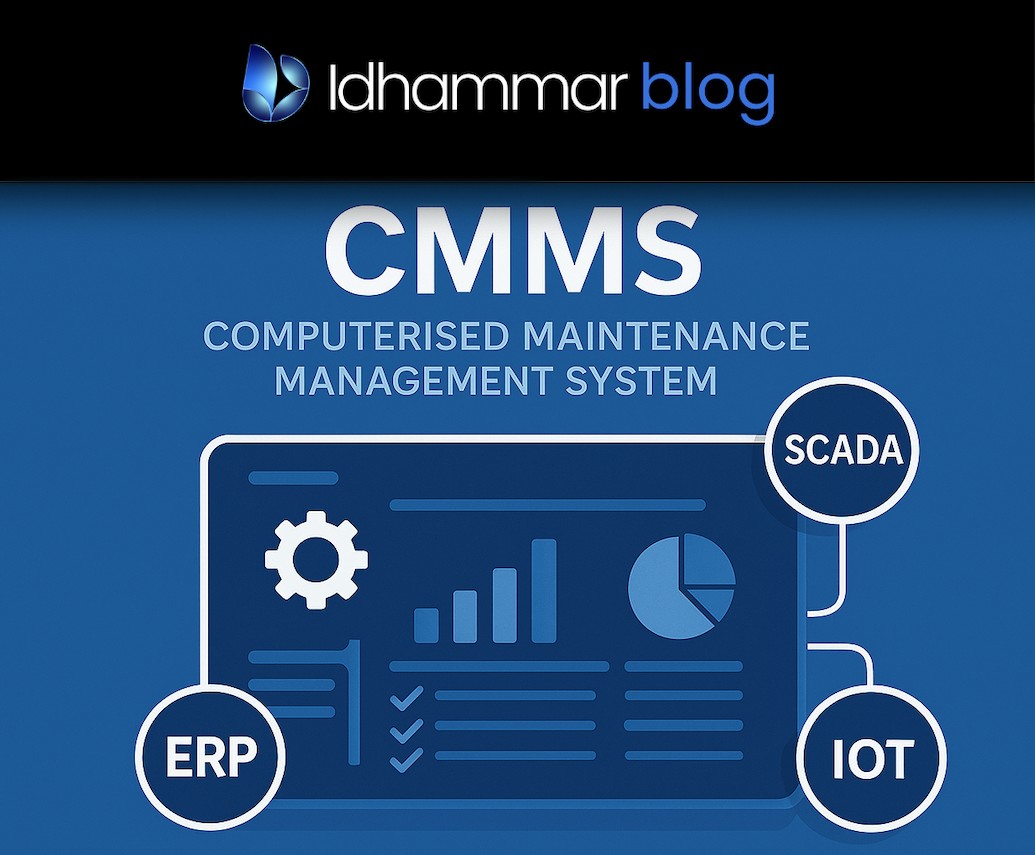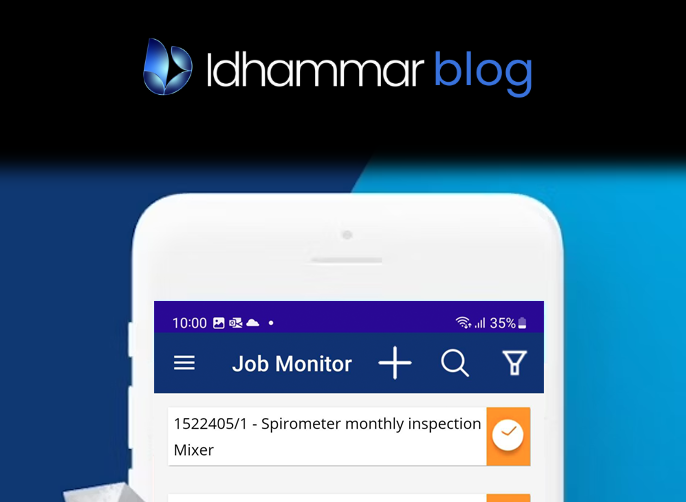28th April marks World Health and Safety at Work Day 2024. As this date approaches, it’s the perfect time to look at the steps we can all take to create safer workplaces.
One injury is one too many, especially if it’s fatal. Yet sadly, workers across the world are still losing their lives at work due to incidents that were preventable.
Idhammar Systems has developed a suite of maintenance management tools that not only enhance operational efficiency but also significantly contribute to creating a safer workplace for all.
In this article, we’ll look at some common challenges in ensuring health and safety at work, and how our Computerized Maintenance Management System can help.
Workplace Health and Safety Statistics in the UK and EU
The UK
The latest data from HSE is regarding the year 2022/23. Within that year, there were 132 workplace fatalities in the UK. The most common causes were falling from a height, being struck by a moving object or vehicle, being trapped by something overturning or collapsing, and coming into contact with moving machinery.
561,000 non-fatal injuries occurred during the same year, according to self-reports from the Labour Force Survey. Up to 437,000 of these injuries lead to up to seven days’ absence, the remaining 124,000 requiring absence of more than seven days. However, only 60,645 non-fatal injuries were actually reported by employers during this period.
The EU
OSHA’s Safety and Health in Europe report from 2023 analyses trends based on data from 2010-2019 and found that the number of fatal incidents reduced significantly in most member states during these years. However, in 2019, 4.4% of non-fatal accidents led to permanent incapacity or 183 days of time off.
Countries with the lowest rates included the Netherlands, Sweden, and Germany; those with the highest rates were Romania, Luxembourg, and Bulgaria.
In 2021, almost 75% of workplace accidents in the EU caused wounds and other superficial injuries, sprains and strains, dislocations, concussions, or internal injuries.
In Ireland in particular, there were 43 workplace fatalities during 2023; working with vehicles and falling from a height were the most common causes.
Mark Cullen, Assistant Chief Executive at Ireland’s Health and Safety Authority was quoted saying that “the self-employed accounted for over half of all reported fatalities…Undertaking risk assessments and making sure the appropriate controls are in place are critically important to ensuring a safe workplace and will undoubtedly protect workers.”
The trend in Ireland is improving overall, however; the number of fatalities per 100,000 workers dropped from 2.8 in 2014 to 1.6 in 2023. Regardless, it’s still tragic to think of the needless suffering that the families of such workers have been through.
Thankfully, there are always more steps organisations can take to improve their approach to safety.
Challenges in Maintenance Safety
Lack of Systematised Maintenance Checks
Maintenance work often requires employees to operate in hazardous environments, dealing with machinery, electrical systems, chemicals, and other potential dangers. Ensuring these environments are as safe as possible is a constant challenge, yet some organisations don’t implement proper systems for this purpose.
The right checks need to be performed before and after any maintenance tasks are conducted. To give an example, consider the importance of having the right PPE available. Ensuring that all maintenance workers have and use the appropriate PPE can be challenging, especially in environments where the needed equipment can vary significantly depending on the specific task or location. Systems are necessary to protect workers in this way – even if it’s a case of protecting them from their own negligence.
Equipment Failure
Known to be one of the primary causes of safety incidents, failures can be prevented by taking a proactive approach to maintenance. Preventive maintenance scheduling or predictive maintenance make this possible. The former would be extremely tedious to manage without software, while predictive maintenance requires intelligent systems that can perform complex data analysis.
Aging Infrastructure
Exacerbating the above, older facilities and equipment can pose additional health and safety risks, necessitating more frequent inspections and maintenance, which can be resource intensive.
Difficulty Tracking Compliance
There are numerous health and safety regulations and standards that maintenance operations need to comply with. Staying up to date with these regulations and ensuring compliance can be challenging, especially when resources are spread thin and you’re operating across different jurisdictions or industries – and without the right tools. That’s why digitising asset management is essential.
Adequate Training
Providing comprehensive and ongoing training for maintenance personnel is crucial to ensure they are aware of potential risks and know how to perform their tasks safely. This includes training on any software systems in place to ensure maintenance teams are using it correctly. Of course, delivering consistent and effective training across the workforce can be challenging.
Idhammar CMMS: A Comprehensive Solution for Safer Maintenance Activities
Our CMMS software consists of various modules, each one tailored to manage specific aspects of maintenance operations, providing automation and supporting data-driven decision making. Here, we’ll look at the key ways in which the software enhances safety.
Preventive and Predictive Maintenance
Idhammar’s Asset Management module lets users set up repeatable jobs as part of planned maintenance, including inspections and lubrication scheduling. It also contains a Work Order Management tool which lets users set priorities, start and completion dates, and allows them to allocate resources. This module also handles predictive maintenance.
Thanks to this module, users have witnessed year-on-year reductions in maintenance costs of 5%-15%, achieving ROI within 6-12 months.
Condition Tracker
Our Condition Tracker module is pivotal in asset tracking. It detects faults, provides early warnings, and manages regular condition monitoring. It monitors all kinds of variables, from temperature to vibration to oil analysis data, identifying issues before they escalate (and users can define which parameters to monitor). As such, it’s critical in preventing accidents and ensuring a safer work environment.
The module records and audits asset condition checks, and verifies that all safety, environmental, legal, and quality checks are in order.
Pre and Post Checks
Idhammar takes pre and post checks to a new level. When a user generates a work order, the software can be configured to create checks automatically for that particular work order. Users can also set triggers so that if certain conditions are met, specific checks are required.
This ensures that nothing is left to chance and that workers are always prompted to conduct the checks that are essential for protecting themselves and their colleagues.
Data can be recorded in different ways – including yes/no or pass/fail responses, as well as numerical information, and dates, times, and signatures.
Data Capture
Another vital pillar of our computerized maintenance management software is the Data Capture module, which offers deep insights into operations, enabling maintenance managers to identify potential risks and inefficiencies. Not only is this vital for reliable, real-time decision making, but it can also inform long-term initiatives that help improve safety.
Managing Asset Lifecycles
Maintenance software is vital for monitoring asset performance throughout their lifecycle, informing critical decisions about repairs, replacements, and retirements. As a result, it helps ensure that assets are only used within safe operational limits.
Inventory Control
Our CMMS software has inventory management features like automatic reordering, real-time online stock management, and customisable purchase order formats. This ensures that essential spare parts and maintenance materials are always available when needed, reducing the risk of equipment failure caused by the unavailability of necessary components.
Timely maintenance and repairs are crucial for safety, and this module ensures that your maintenance team has exactly what they need – when they need it.
Reporting
The Reporting module provides instant alerts, offering real-time visibility into performance and facilitating swift assessments against KPIs. This instant access to information enables organisations to quickly identify and address safety concerns and mitigate risks. The availability of data also enhances collaboration, reduce the risk of mistakes.
Conclusion
World Health and Safety at Work Day highlights the importance of creating safe work environments, preventing today’s workers from suffering fatal or non-fatal injuries like some of their predecessors.
Our CMMS software plays a pivotal role here, helping organisations maintain their assets in a proactive way. As well as the practical aspects (i.e., predictive maintenance, pre and post checks, etc), it also encourages a safety-aware culture.
To request a demo of our world class enterprise asset management software, contact us today.





